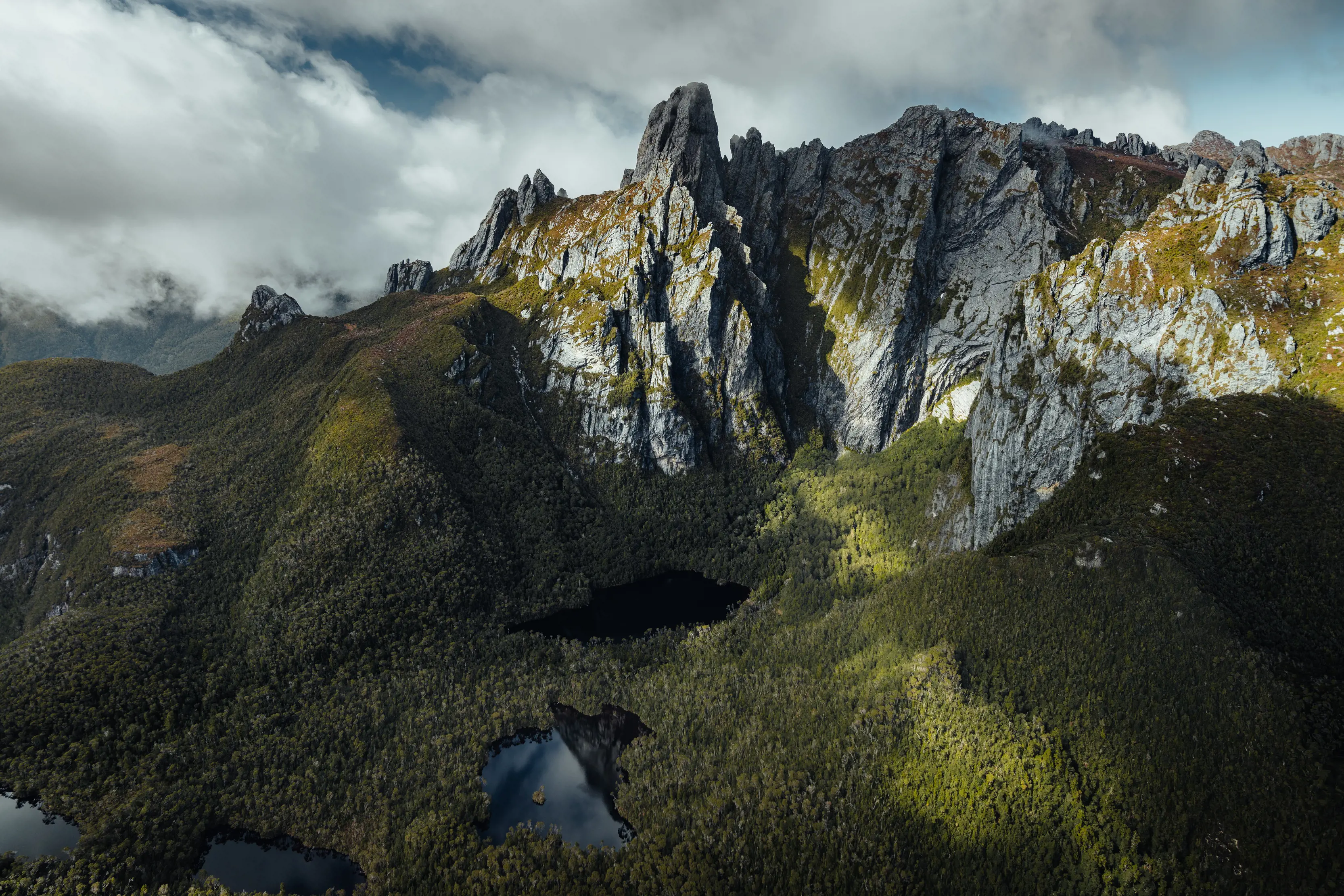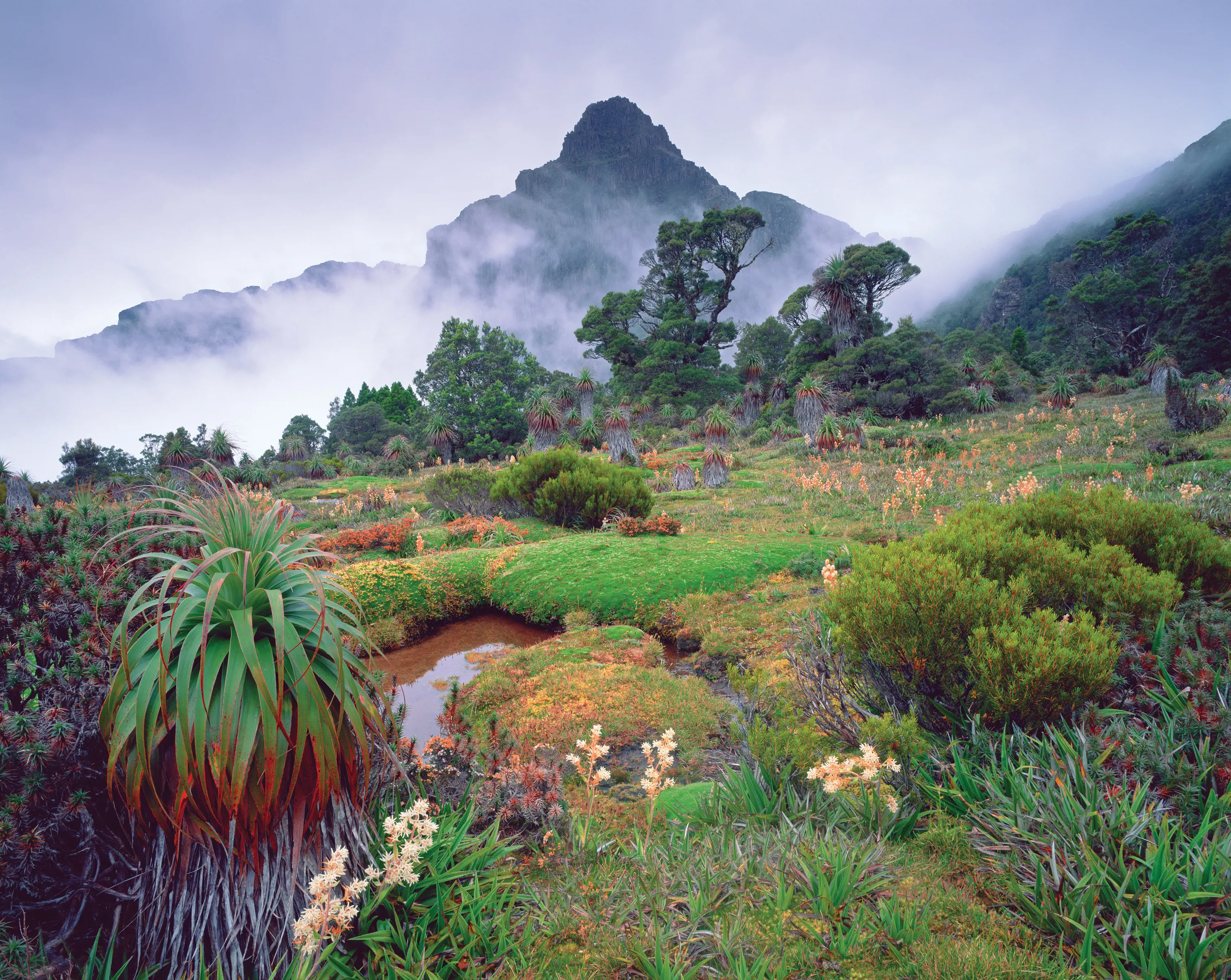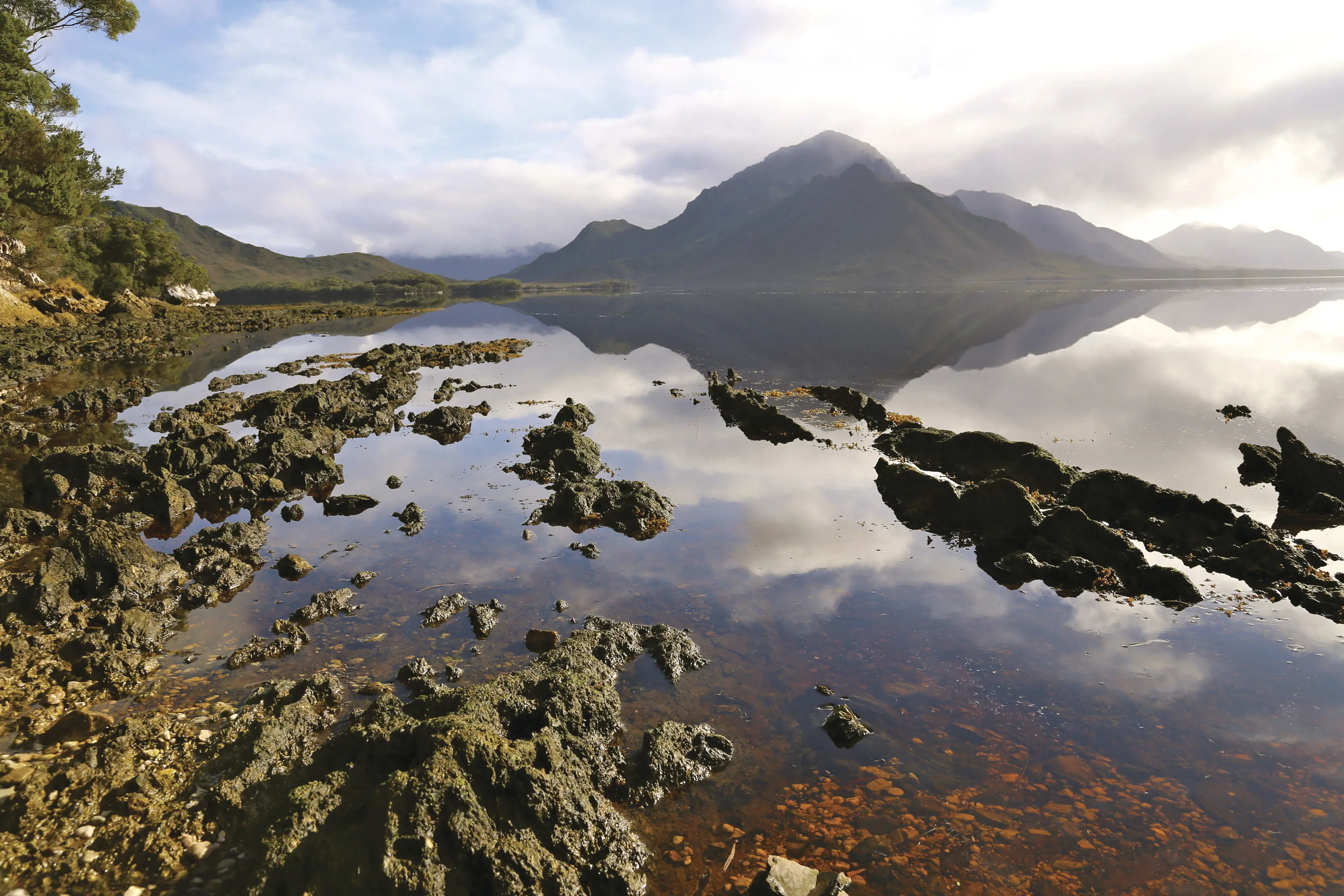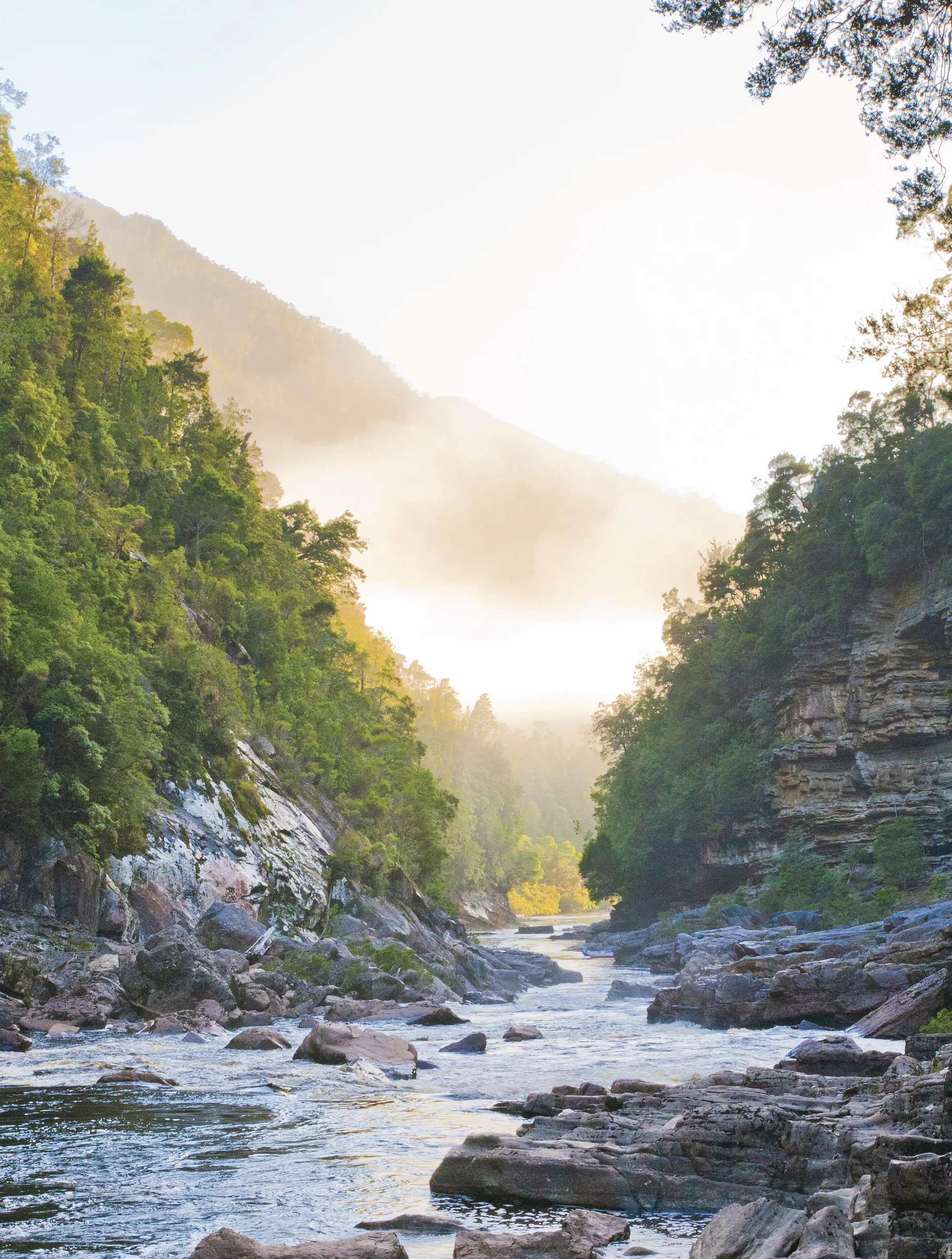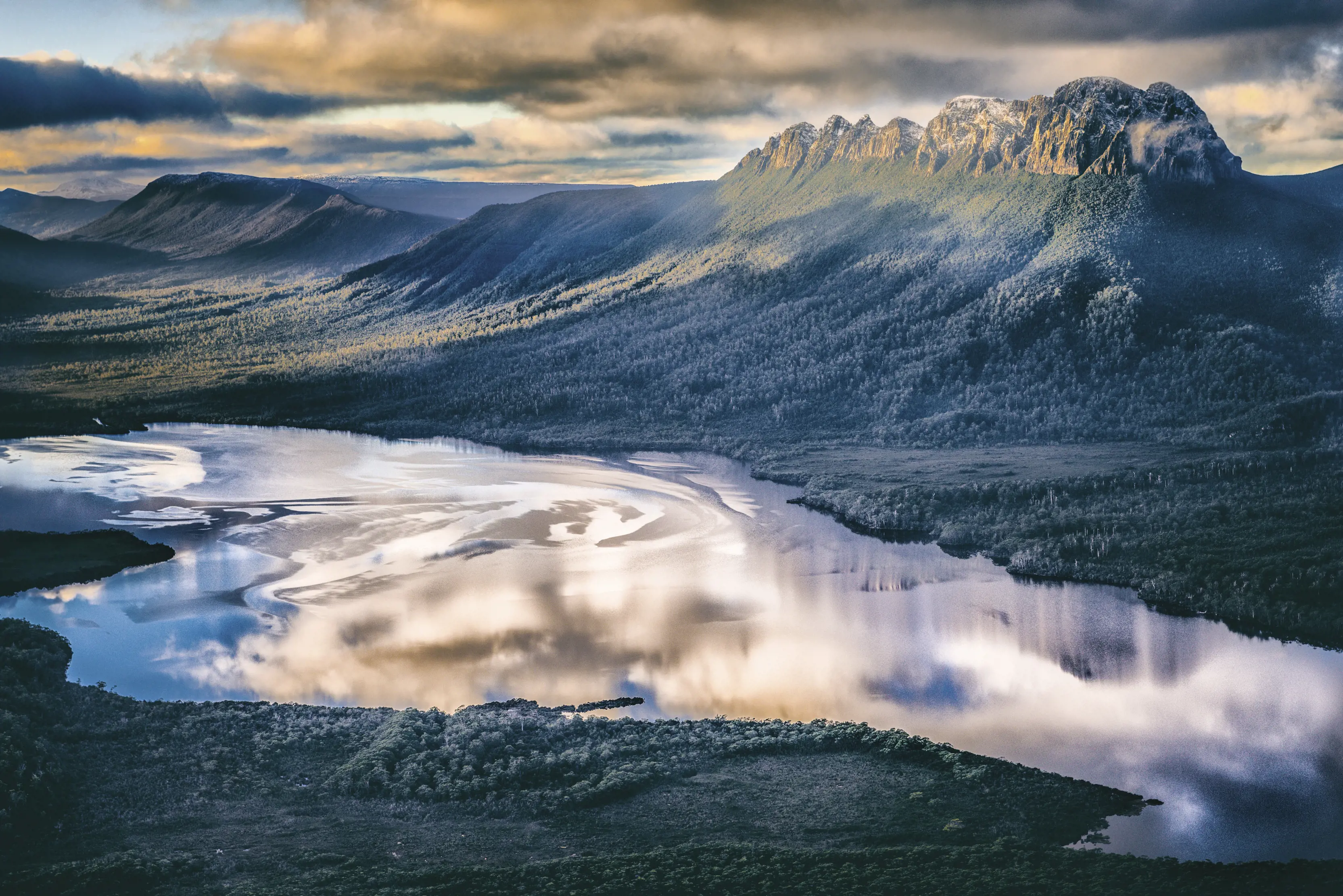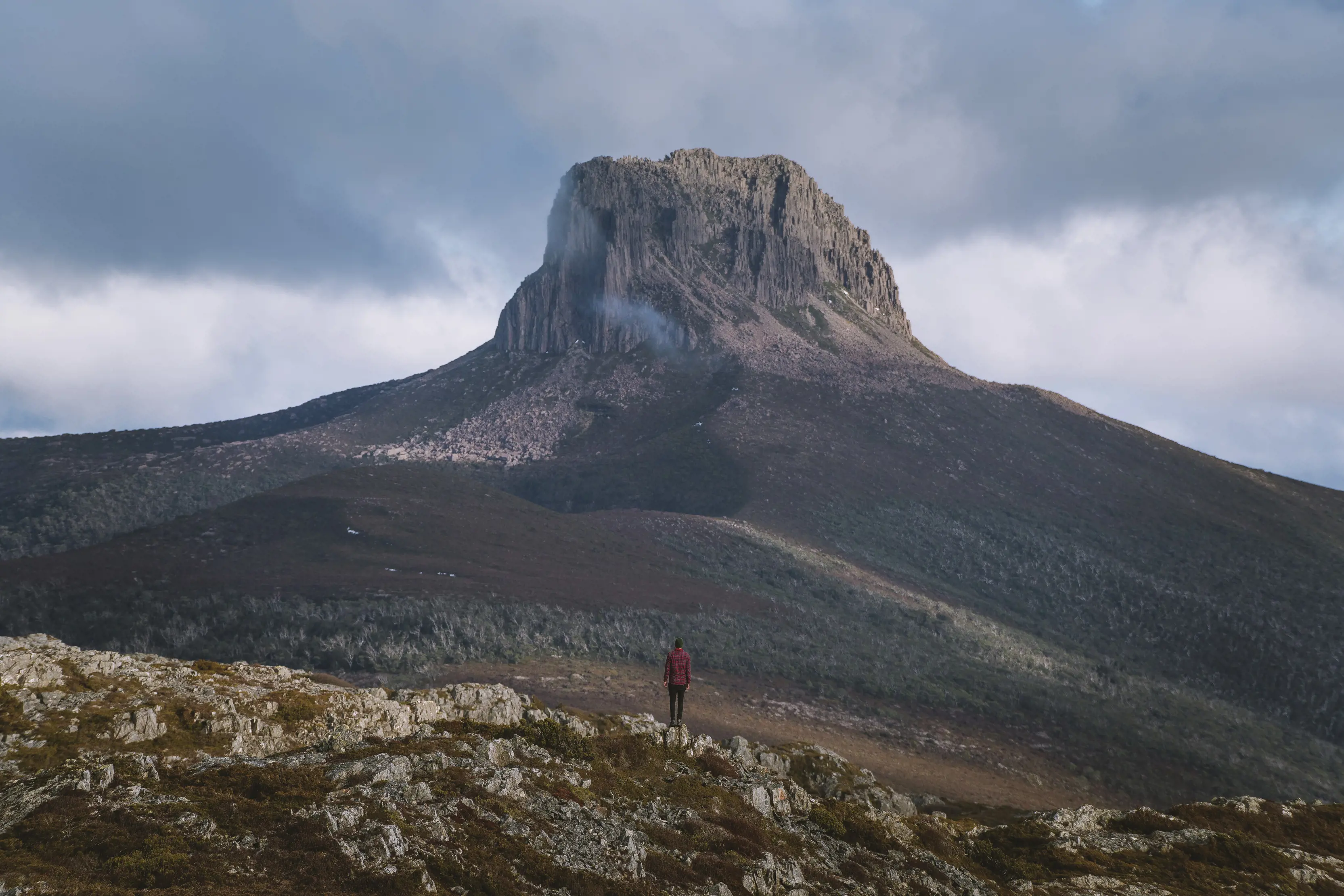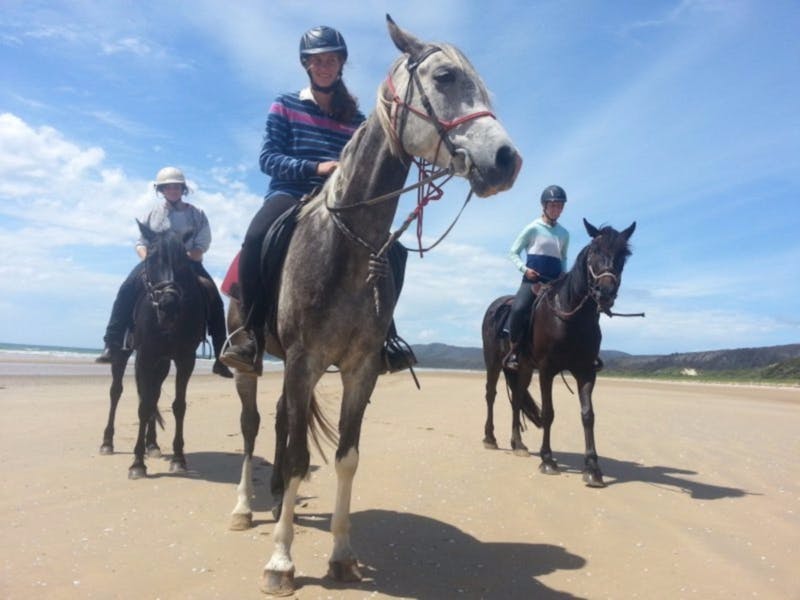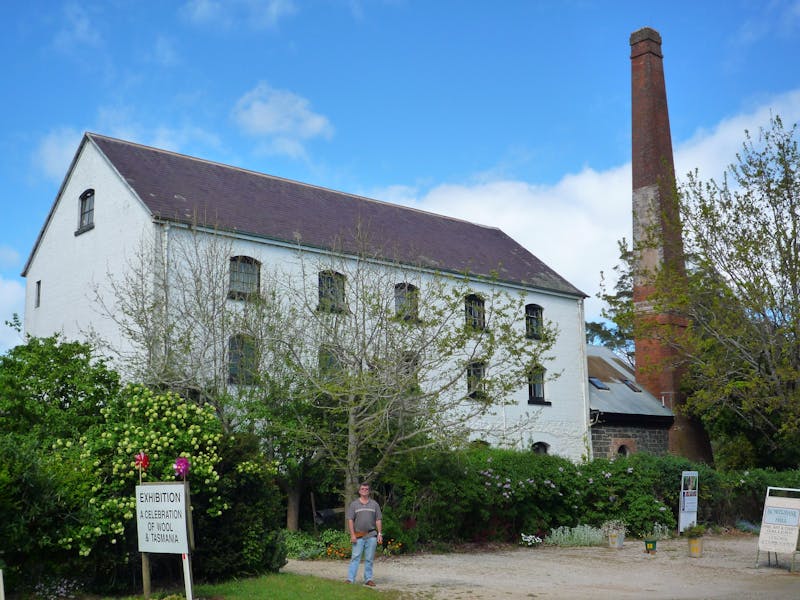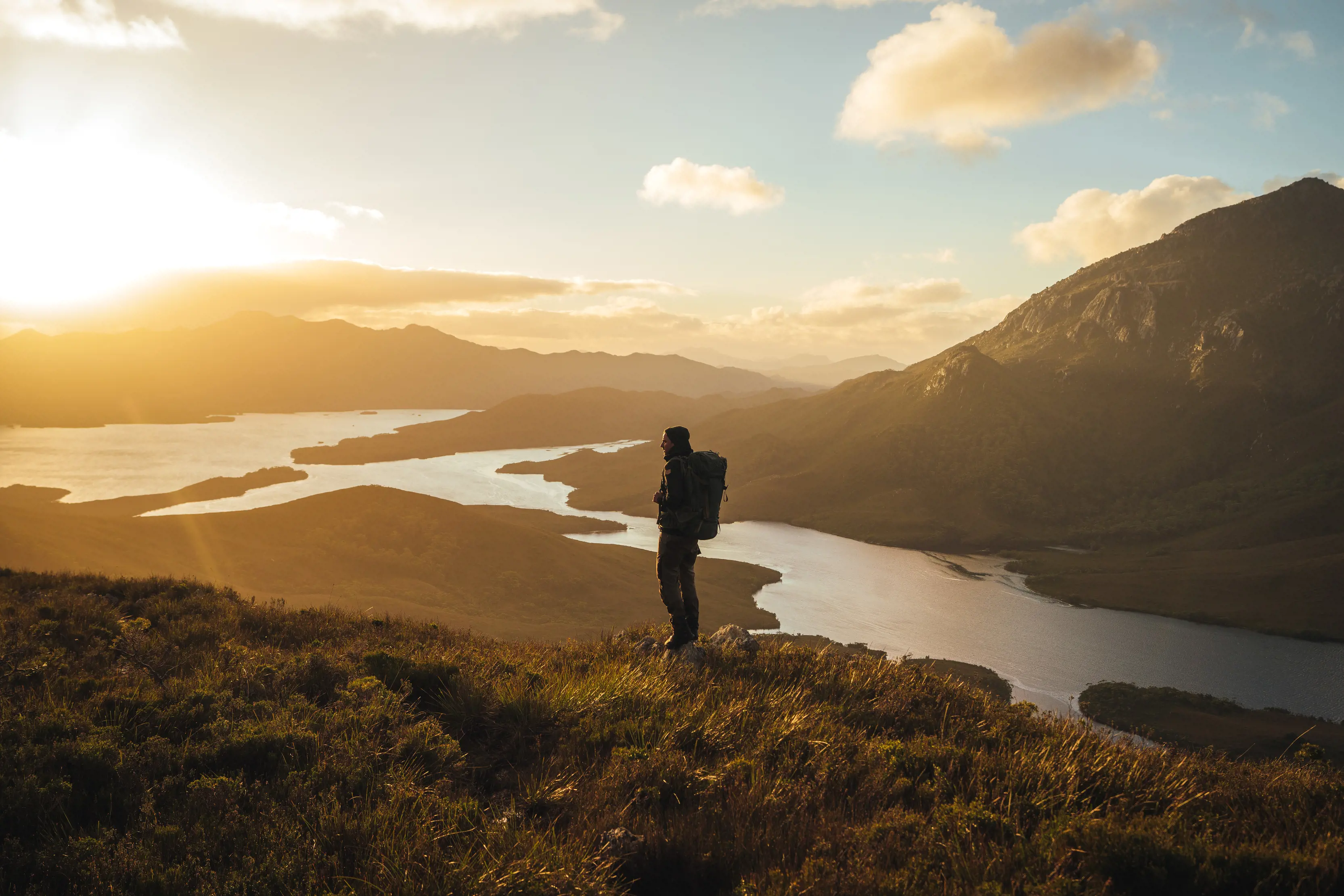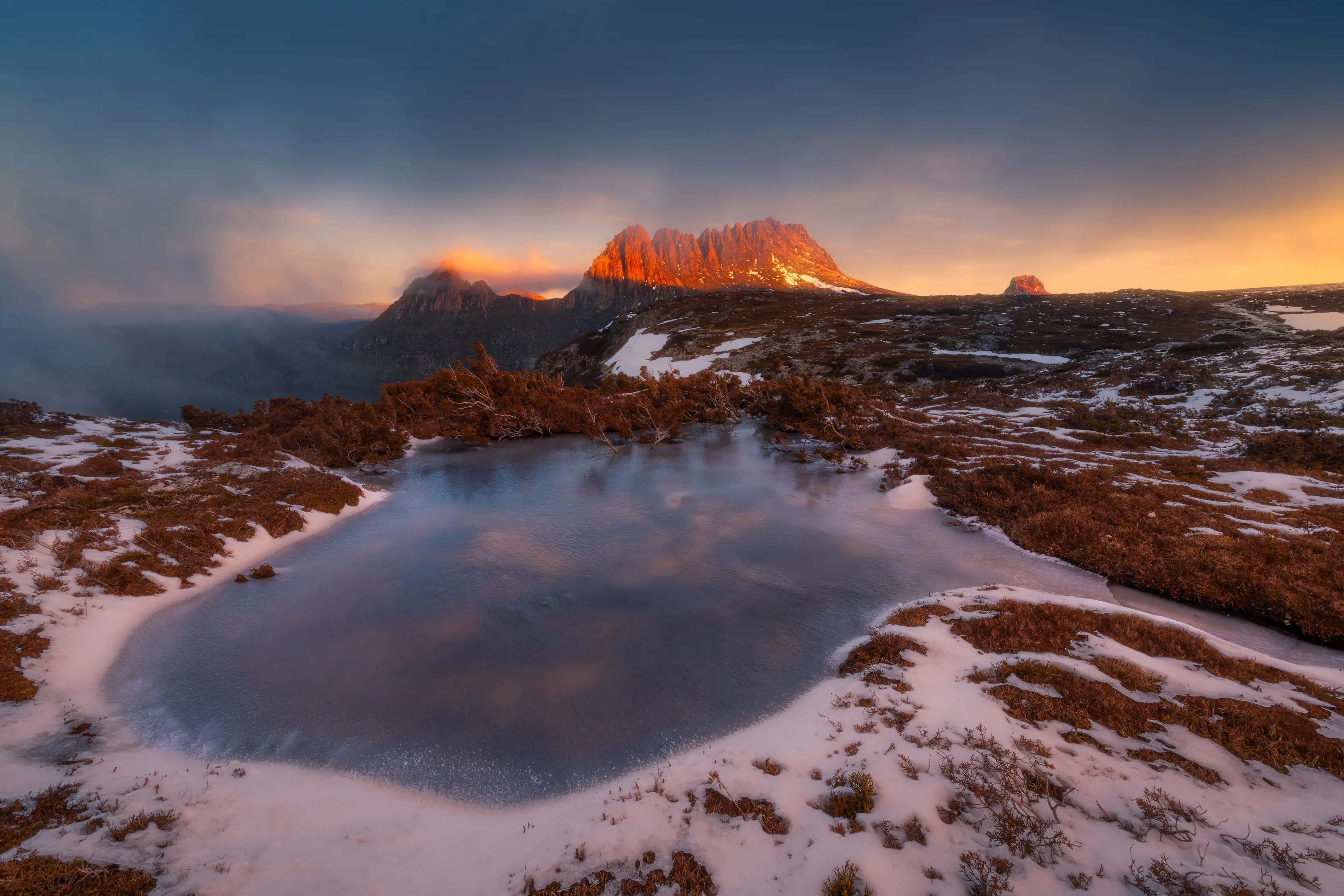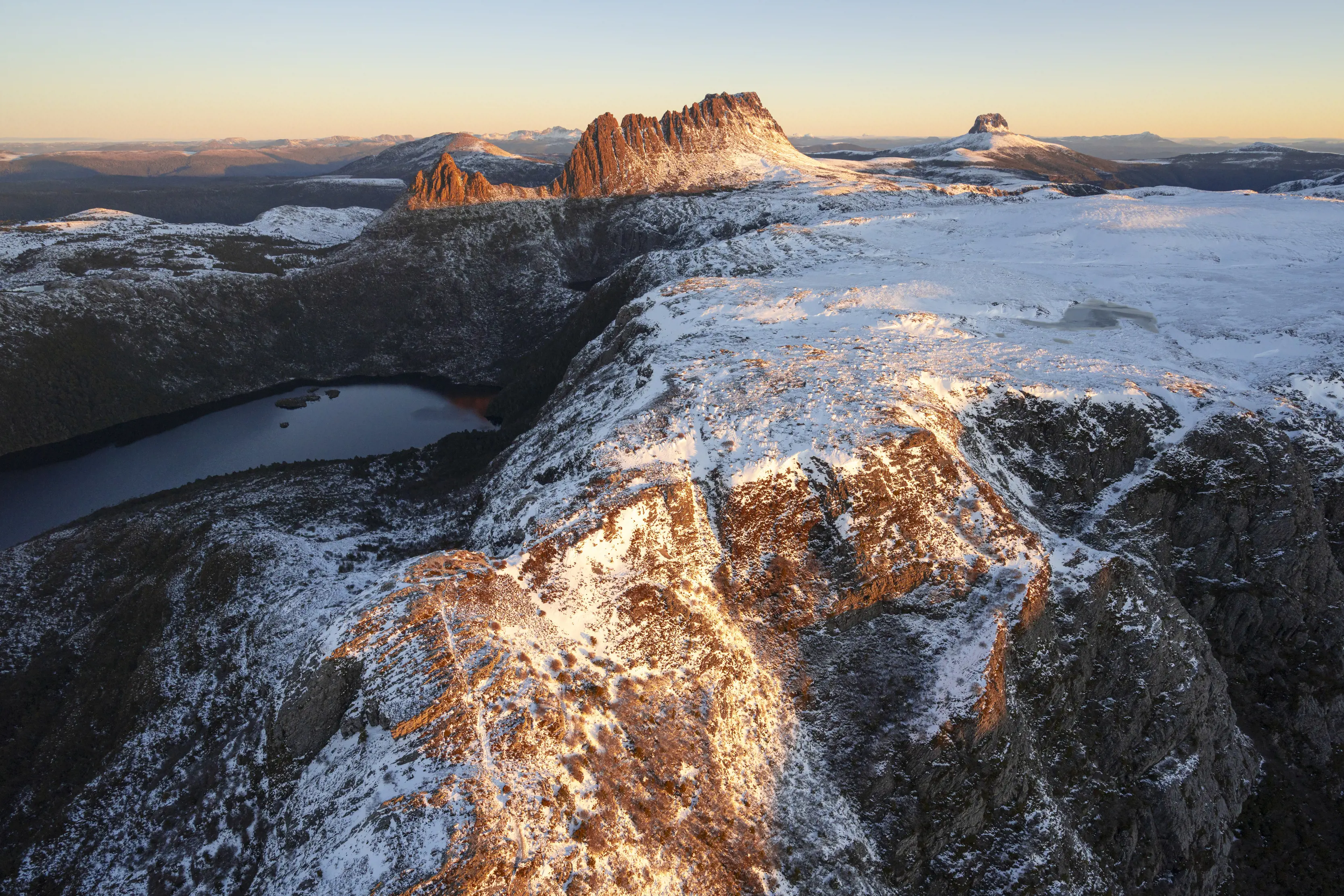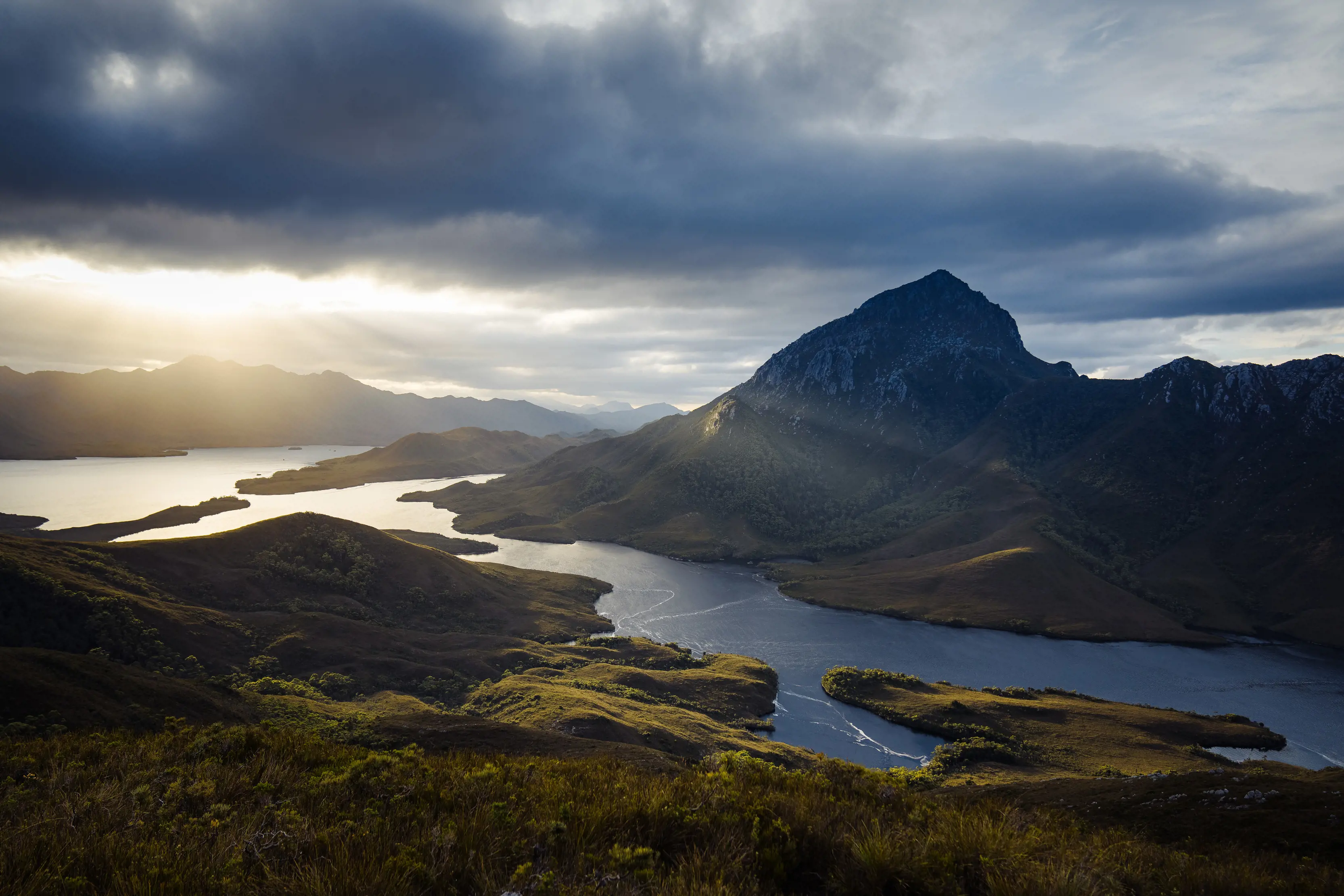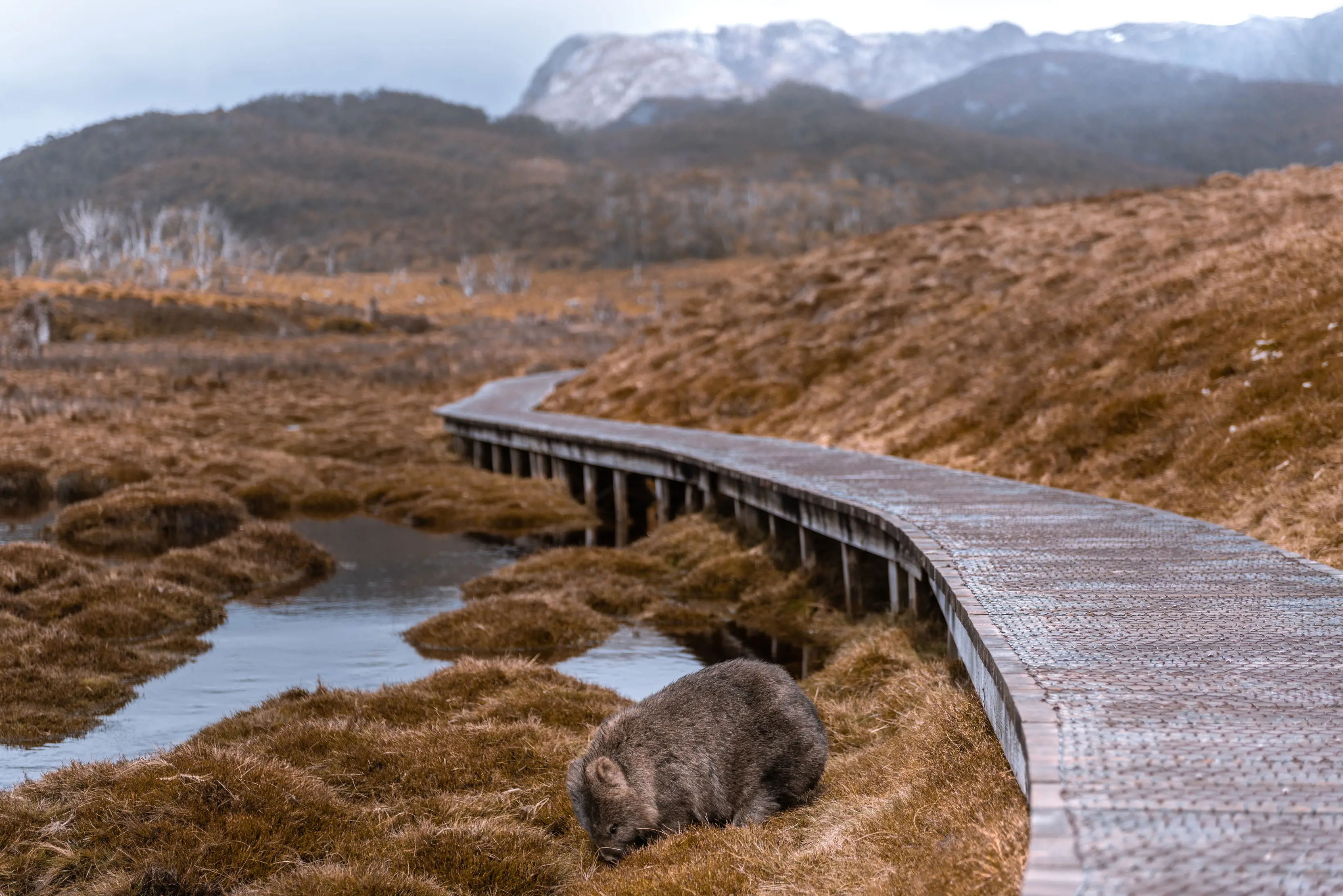
Look at a map of Tasmania and a vast swathe of the west is shaded green, marking the Tasmanian Wilderness World Heritage Area.
This chain of national parks and reserves covers 1.5 million hectares, more than 20% of the state, and represents an area of “outstanding international importance”.
The Tasmanian Wilderness World Heritage Area (TWWHA) was designated by UNESCO in December 1982, in the wake of the Franklin River blockade, when protestors and the community rallied to stop the waterway from being dammed. The area was further expanded in 1989.
As one of the three largest cool-temperate wilderness areas remaining in the Southern Hemisphere, the TWWHA is one of the last great wildernesses on Earth.
The Tasmanian Wilderness World Heritage Area is one of the last great wildernesses on Earth.
Culture and nature
There are more than 1100 World Heritage Sites across the planet, but only 39 of them have been listed for their combined natural and cultural values. The TWWHA is one of only four such mixed sites in Australia.
It was listed because this area constitutes one of the last expanses of cool-temperate rainforest in the world, while remains in limestone caves attest to human occupation dating back at least 20,000 years. In Kutakina Cave, on the bank of the Franklin River, for instance, more than 250,000 pieces of bone and 37,000 stone artefacts were found in an area of just 0.65 cubic metres of earth, making it one of the richest archaeological sites in Australia.
Cool-temperate rainforests occur in places of mild climate with high rainfall, usually more than 1500mm a year.
The TWWHA encompasses six national parks and a host of reserves. The national parks are Cradle Mountain-Lake St Clair, Walls of Jerusalem, Mole Creek Karst, Franklin-Gordon Wild Rivers, Southwest and Hartz Mountains.
Many of Tasmania’s great multi-day bushwalks roam through these parks, including the Overland Track and South Coast Track, but it isn’t necessary to shoulder a heavy backpack to get a taste of the World Heritage wonder.
How to glimpse World Heritage wilderness
- Walk the Dove Lake circuit, passing beneath the nose of Cradle Mountain (6km loop, 2hr).
- Set out on a web of short walks from Cynthia Bay at Lake St Clair. Walks range from 45 minutes to a figure-of-eight loop (90min return, 4.7km).
- Dive underground on a ranger-led tour of Marakoopa Cave or King Solomons Cave in Mole Creek Karst National Park.
- Glide along the mirror-still Gordon River on a day cruise from Strahan.
- Climb to the summit of Hartz Peak at the eastern edge of the TWWHA for a view deep into the wilderness (3-5hr return, 7.4km).
- Walk to Donaghys Hill for a magnificent view over the Franklin River and Frenchmans Cap, two of the natural stars of the wilderness (from the Lyell Highway, 40min return, 2.2km).
- Fly over the wilderness to Melaleuca with Par Avion on a day tour that explores the remote waters of Bathurst Harbour and Port Davey.
